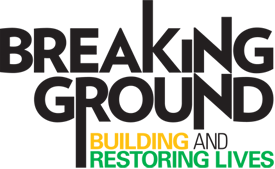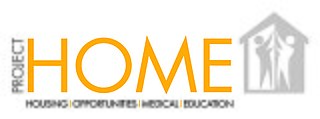
San Francisco, officially the City and County of San Francisco, is the commercial, financial, and cultural center of Northern California. The city proper is the fourth most populous city in California, with 808,437 residents, and the 17th most populous city in the United States as of 2022. The city covers a land area of 46.9 square miles at the end of the San Francisco Peninsula, making it the second-most densely populated large U.S. city after New York City and the fifth-most densely populated U.S. county, behind only four of the five New York City boroughs. Among the 92 U.S. cities proper with over 250,000 residents, San Francisco was ranked first by per capita income and sixth by aggregate income as of 2022. Colloquial nicknames for San Francisco include Frisco, San Fran, The City, and SF.

Arthur Christ Agnos is an American politician. He served as the 39th mayor of San Francisco, California from 1988 to 1992 and as the Regional Head of the United States Department of Housing and Urban Development from 1993 to 2001.
Supportive housing is a combination of housing and services intended as a cost-effective way to help people live more stable, productive lives, and is an active "community services and funding" stream across the United States. It was developed by different professional academics and US governmental departments that supported housing. Supportive housing is widely believed to work well for those who face the most complex challenges—individuals and families confronted with homelessness and who also have very low incomes and/or serious, persistent issues that may include substance use disorders, mental health, HIV/AIDS, chronic illness, diverse disabilities or other serious challenges to stable housing.

Single room occupancy is a form of housing that is typically aimed at residents with low or minimal incomes, or single adults who like a minimalist lifestyle, who rent small, furnished single rooms with a bed, chair, and sometimes a small desk. SRO units are rented out as permanent residence and/or primary residence to individuals, within a multi-tenant building where tenants share a kitchen, toilets or bathrooms. SRO units range from 7 to 13 square metres. In some instances, contemporary units may have a small refrigerator, microwave, or sink.

The Edwin is a three-storey building in Toronto, Ontario, Canada operated by WoodGreen Community Services to provide community housing. It incorporates the former New Edwin Hotel, built in 1905 to serve as a hotel for railway passengers coming from a now closed railway station at the foot of the Don Valley. It is located at the intersection of Queen Street East and Carroll Street, east of the Don River, in the Riverside subdistrict of South Riverdale.

So Others Might Eat (SOME) is a nonprofit organization that provides services to assist those dealing with poverty and homelessness in Washington, D.C. The organization provides affordable housing, job training, counseling and other healthcare services, and daily needs such as food and clothing to the poor and homeless. It spends the largest portion of its annual budget on affordable housing, with a majority of its residents recovering from addiction. SOME describes its mission as helping "our vulnerable neighbors in Washington, DC, break the cycle of homelessness through our comprehensive and transformative services".
Housing First is a policy that offers unconditional, permanent housing as quickly as possible to homeless people, and other supportive services afterward. It was first discussed in the 1990s, and in the following decades became government policy in certain locations within the Western world. There is a substantial base of evidence showing that Housing First is both an effective solution to homelessness and a form of cost savings, as it also reduces the use of public services like hospitals, jails, and emergency shelters. Cities like Helsinki and Vienna in Europe have seen dramatic reductions in homelessness due to the adaptation of Housing First policies, as have the North American cities Columbus, Ohio, Salt Lake City, Utah, and Medicine Hat, Alberta.

The Tenderloin is a neighborhood in downtown San Francisco, in the flatlands on the southern slope of Nob Hill, situated between the Union Square shopping district to the northeast and the Civic Center office district to the southwest. Encompassing about 50 square blocks, it is historically bounded on the north by Geary Street, on the east by Mason Street, on the south by Market Street and on the west by Van Ness Avenue. The northern boundary with Lower Nob Hill has historically been set at Geary Street.
The Coalition on Homelessness is an American homeless advocacy and social justice organization that focuses on creating long-term solutions to homelessness, poverty, and housing issues in San Francisco, California. Founded in 1987, the group also founded the newspaper Street Sheet and the Community Housing Partnership. It is based on Turk Street in the Tenderloin district.
The Venice Community Housing Corporation (VCHC) was formed in 1988 by a group of grassroots activists who were interested in preserving affordable housing in the Venice neighborhood of Los Angeles, California, United States. Since that time, VCHC has grown to a comprehensive community development corporation with family support programs, gang prevention programs, job training and affordable housing.

Compass Family Services is a 501(c)(3) non-profit organization in San Francisco, California, that provides a wide variety of human services to homeless and at-risk of homelessness families. In 2019, they served 6,000 parents and children. Its services include intake and referral to shelter, emergency shelter, transitional housing, and childcare—in addition to a broad spectrum of counseling, parenting education, prevention, and support services.

Breaking Ground, formerly Common Ground, is a nonprofit social services organization in New York City whose goal is to create high-quality permanent and transitional housing for the homeless. Its philosophy holds that supportive housing costs substantially less than homeless shelters — and many times less than jail cells or hospital rooms, and that people with psychiatric and other problems can better manage them once they are permanently housed and provided with services. Since its founding in 1990 by Rosanne Haggerty, the organization has created more than 5,000 units of housing for the homeless. "This is about creating a small town, rather than just a building," according to Haggerty. "It's about a real mixed society, working with many different people." Haggerty left the organization in 2011 to found Community Solutions, Inc. Brenda Rosen was promoted from Director, Housing Operations and Programs to Executive Director, and has led the organization since.

The Brisbane Baylands is a 660-acre (270 ha) parcel of land in Brisbane, just south of the San Francisco border. There have been several proposals to develop the site, which was previously used as a railyard and a municipal landfill; historical uses have led to contaminated soil, polluted stormwater runoff, and potential buried toxic waste. None of the present proposals have been approved by Brisbane's city council.

Project HOME is a nationally recognized 501(c)(3) non-profit organization that provides housing, opportunities for employment, medical care and education to homeless and low-income persons in Philadelphia, Pennsylvania.
Berkeley Food and Housing Project is a nonprofit organization serving homeless men, women, and children in Berkeley, California and other parts of Northern California. BFHP is one of the largest homeless service providers in the East Bay.
Conard House is a 501(c)(3) nonprofit organization based in the SoMa arts district of San Francisco, working to support adults living with serious mental health and medical conditions. The organization's restated mission is "to empower people who live and work on the margins of society."

London Nicole Breed is an American politician who is the 45th and current mayor of the City and County of San Francisco. She was supervisor for District 5 and was president of the Board of Supervisors from 2015 to 2018.

The San Francisco Bay Area comprises nine northern California counties and contains four of the ten most expensive counties in the United States. Strong economic growth has created hundreds of thousands of new jobs, but coupled with severe restrictions on building new housing units, it has resulted in an extreme housing shortage which has driven rents to extremely high levels. The Sacramento Bee notes that large cities like San Francisco and Los Angeles both attribute their recent increases in homeless people to the housing shortage, with the result that homelessness in California overall has increased by 15% from 2015 to 2017. In September 2019, the Council of Economic Advisers released a report in which they stated that deregulation of the housing markets would reduce homelessness in some of the most constrained markets by estimates of 54% in San Francisco, 40 percent in Los Angeles, and 38 percent in San Diego, because rents would fall by 55 percent, 41 percent, and 39 percent respectively. In San Francisco, a minimum wage worker would have to work approximately 4.7 full-time jobs to be able to spend less than 30% of their income on renting a two-bedroom apartment.
The Watts Labor Community Action Committee (WLCAC) is a non-profit, 501 (c) 3 organization incorporated in the State of California, in 1965. Its mission "is to improve the quality of life for the residents of Watts and neighboring communities."











